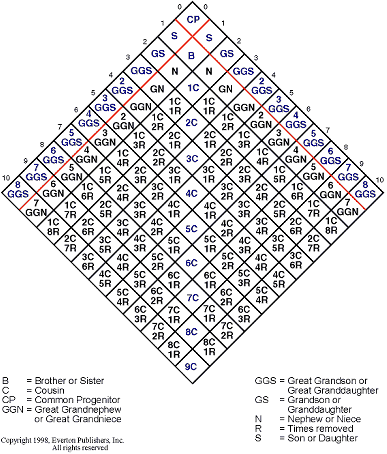Why Has My Third Cousin Been Removed Twice?
Most of the time family relationships are simple. We know our father and mother, our brothers and sisters, aunts, uncles, grandparents, and so forth. But when we get to a family reunion we are introduced to Suzanne Something and told that we are third cousins, twice removed.
Say what? Cousins you understand. But third cousins? And removed twice from what?
In western society, “cousinhood” is our way of expressing how closely two people (not brothers and sisters) are related to each other. This is done by counting generations back to their common ancestor, and subtracting one.
For example, two people who share the same grandparents count two generations to their common ancestors. Two minus one equals one, so they are “first” cousins. If their closest common ancestors were their great great grandparents, they would be third cousins (four generations, minus one, equals three).
The “removed” come into play when the number of generations is unequal. If you count three generations to a common ancestor (your great-grandfather), and your cousin counts four generations to that same ancestor (her great great grandfather), your “cousinhood” is expressed first in terms of the closest relationship (second cousins), with an amendment showing the difference of one generation (once removed).
Determining relationships can sound complex, but if you remember that you’re simply counting generations, you can do it in your head (or use your fingers).







